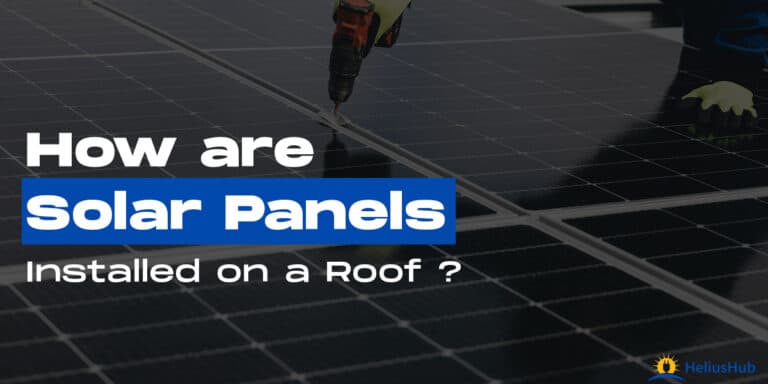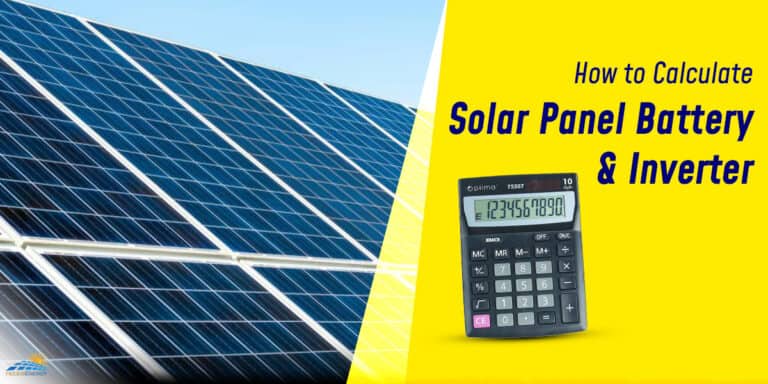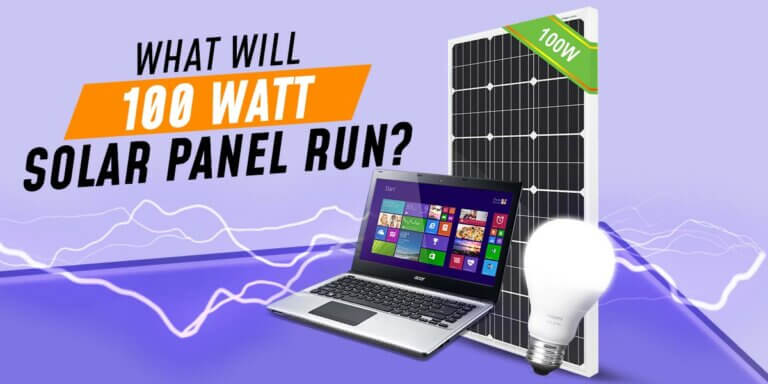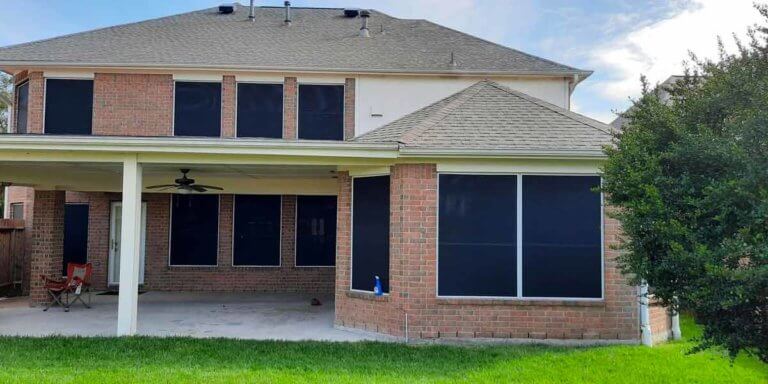Best Solar Panel Angles To Get The Best Out Of It

To build a high-efficiency solar power system, we often tend to forget about one of the most important factor that affects solar panels efficiency i.e. solar panel angle, apart from stressing over good quality panels and the requirements of the house.
The best way to optimize the production of solar panels lies within the importance of solar panels’ orientation or angles. However, it is important to remember that it is not always about producing a load of energy but focusing on meeting the consumption needs.
For example, if a person is a self-consuming electricity instead of sending it back to the utility grid, the optimal orientation or optimal solar panel angle won’t necessarily be the same.
Therefore, let’s take a quick look to understand how to look for the best solar angle to achieve maximum efficiency and the factors that usually affect it.
What Does Solar Panel Angle Mean And Why Is It So Important To Tilt The Solar Panels?
Another way of describing the vertical tilt of the PV system is Solar Panel Angle. Therefore, when a solar power system is leveled with the ground, it is unlikely to have a tilt.
However, if the solar power system ( portable or solar farm system) is positioned upright or perpendicular to the ground, it is most obviously at a 90-degree angle. Thus, the solar panel angle does affect the amount of solar-powered electricity produced by the solar system, which is also based on two significant factors, latitude & season.
Hence, adjusting the solar panel tilt in regards to these factors is the best way to achieve maximum solar power production.
The solar panel tilt is crucial for the maximum capacity of energy production when the sunlight directly hits the panel perpendicularly. During winters in the northern hemisphere, the sun shines relatively low in comparison to the horizon. Therefore, the solar panels perform their best at a steep angle of 60 degrees.
Similarly, the ideal angle for spring is considered 45 degrees, and that of summer is usually 20 degrees when the sun is shining bright in the high.
What Is The Optimal Angle For Solar Panels?
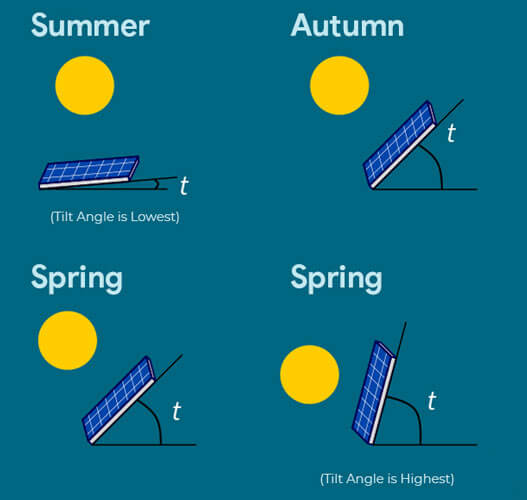
The optimal angle of solar panels for the best production of solar power directly faces south at an angle of 180 degrees. If the solar panels face outside true south up to a maximum of 45 degrees, the production reduction is rather low. However, at 90 degrees from the true south, the production can drop up to 30%.
Firstly, the choice of the tilt in solar panels on a roof of a house caters to satisfy two basic requirements: to meet ends for energy production and meet the demand of an aesthetically pleasing outlook and a durable result functioning. Therefore, understanding the optimal angle for higher solar energy production will help choose the best compromise for the installation.
Moving on to the factors that heavily influence the tilt angle of the solar panels, let’s discuss:
- The latitude of the geographical location where one desires to mount the solar panels.
- The season to determine whenever less or more energy is required.
How Does Latitude Affect The Angle Of The Solar Panels?
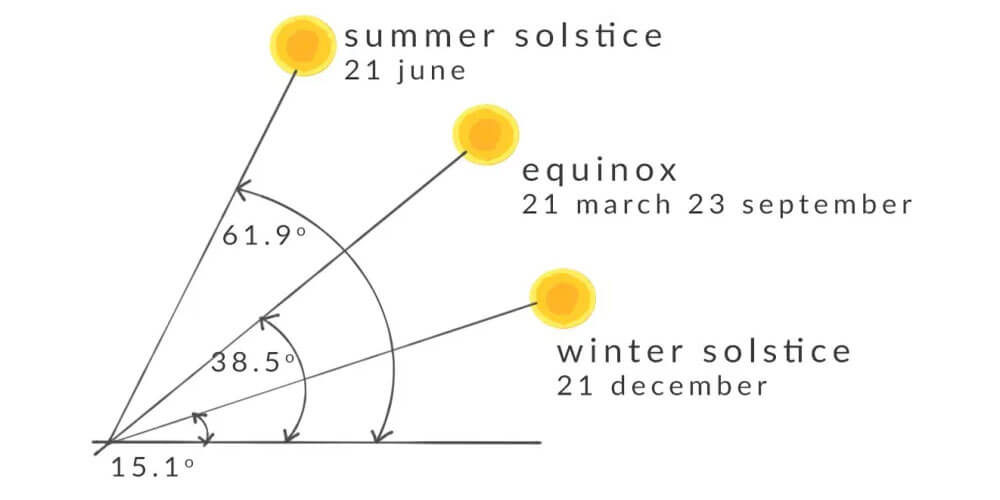
The more a solar panel is perpendicular to direct sunlight, the more it produces solar electricity. By this logic, the maximum energy is generally produced in the midday, while the sun reaches its highest altitude on the horizon.
Therefore, it is wise to know the maximum as well as the minimum altitude of the sun throughout the year to determine the perfect degree of tilt to achieve the highest efficiency of the solar panels. Hence, we must consider the two most important days during the whole year to understand this better:
- Summer Solstice: a day usually on the 20th or 21st June when we have the most hours of light and the sun is at its maximum altitude during midday.
- Winter Solstice: a day usually on the 21st or 22nd December when we have comparatively fewer hours of light than during the year, and the sun is at its minimum altitude during midday.
How Do Seasons Affect The Angle Of The Solar Panels?
Another important aspect that determines the tilt of the solar panels is the season. Thus, this implies that one must change and adjust the solar panel angles each season based on the requirements.
The sun is lower in winter seasons and higher in summers, reflecting the need for acquiring different angle set-ups at different times throughout the year.
If adjusted twice a year, a solar system at 40 degrees latitude will enjoy a visible boost of energy of about 4.1%. Similarly, angle or tilt adjustments during the spring and autumn seasons can also yield around an additional 0.5% energy output.
However, remember that adjusting solar panel angles at every particular season throughout the year is not an easy task. It is also because most solar panels are usually mounted at a fixed angle of the roof, unable to further adjust.
How Do Shallow And Steep Roofs Affect The Output Of The Solar Panels

While comparing the output produced by the solar panels in a year, one can easily put together that there is comparatively little difference between the installed panels on a shallow roof or at 15 degrees and a steep roof or at 45 degrees. It is because these balance pitches usually balance themselves throughout different seasons during the year.
However, shallow roofs usually help the solar panels to trap more sun-exposed energy during the summers, while on the other hand, the steep roofs function to help them produce more solar energy during the winters. Although one can use solar panel trackers to keep them fixed at the optimal angle, the costs and complications involved aren’t worth it mostly.
Conclusion
Thus, the ultimate performance of solar panels is hugely affected by their angle of inclination of tilt. Therefore, keeping the following points in mind, one needs to adjust the solar angle based on both latitude and season, to extract the maximum efficiency of the solar panels, although failing to achieve it won’t hamper the solar system or solar energy production.

